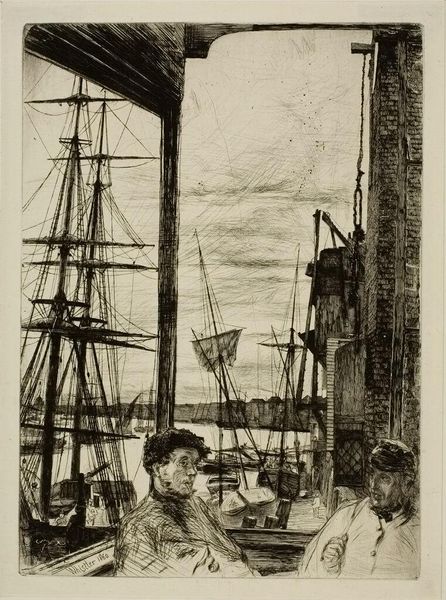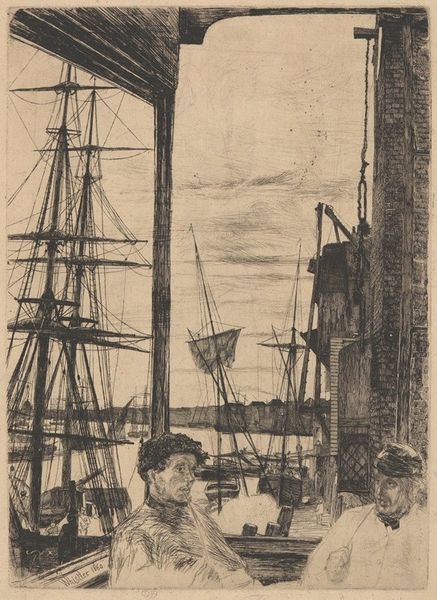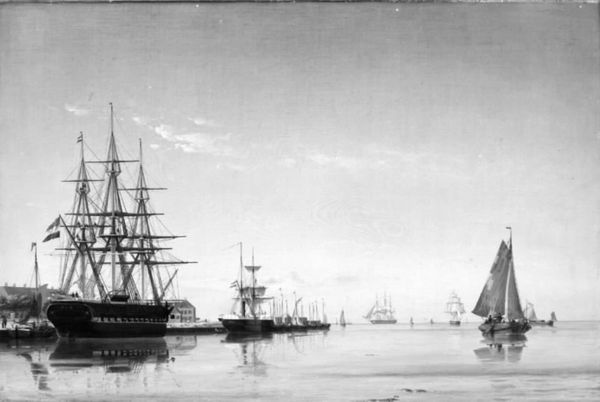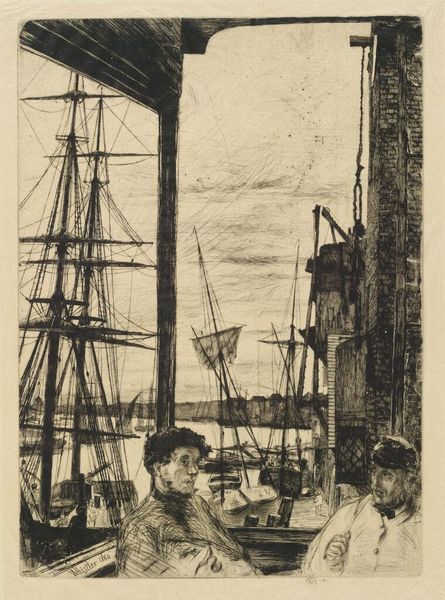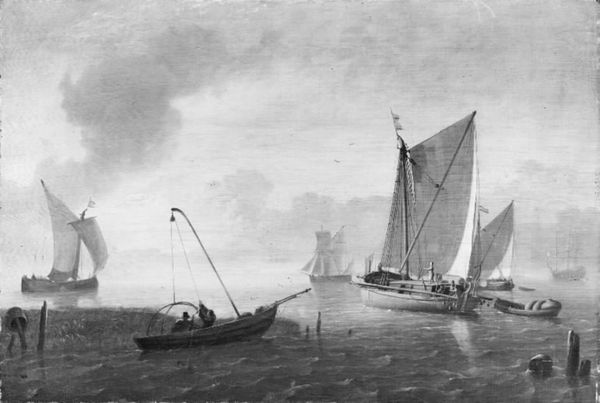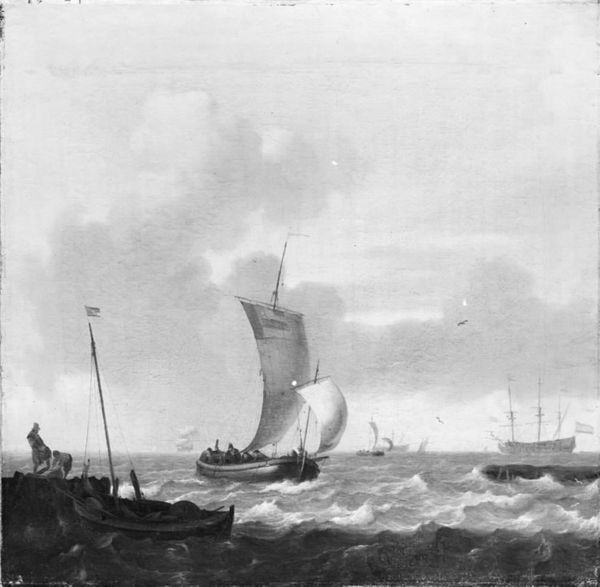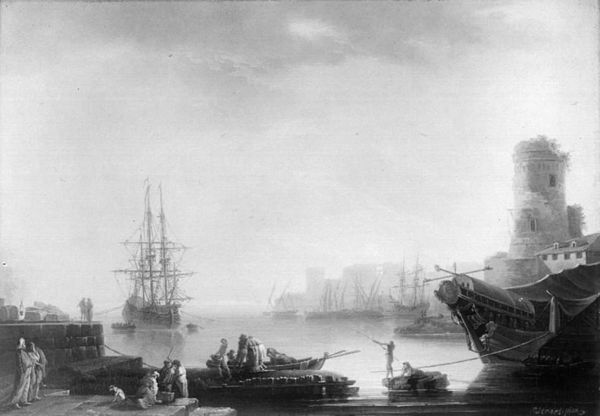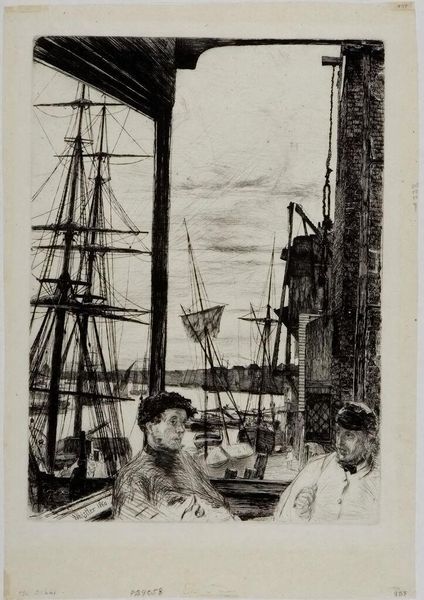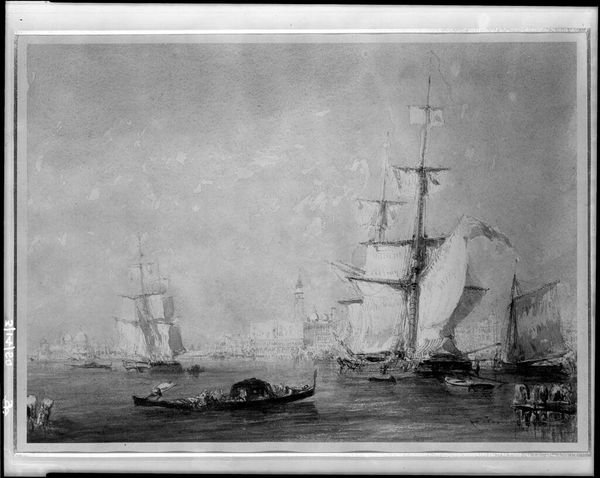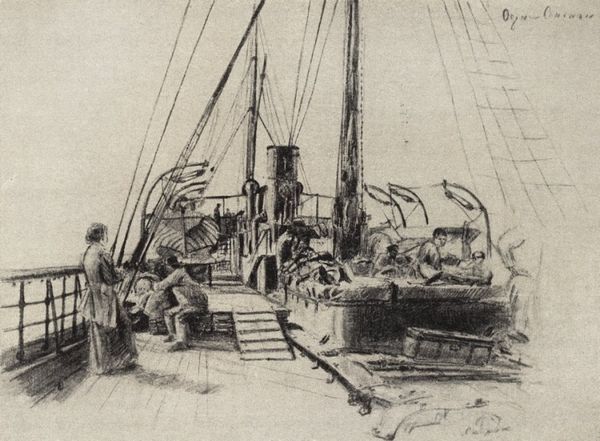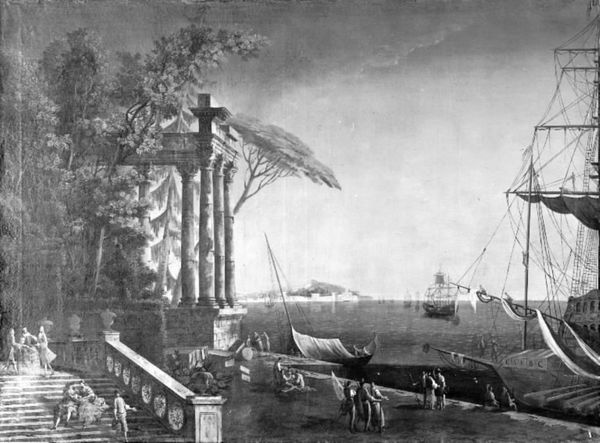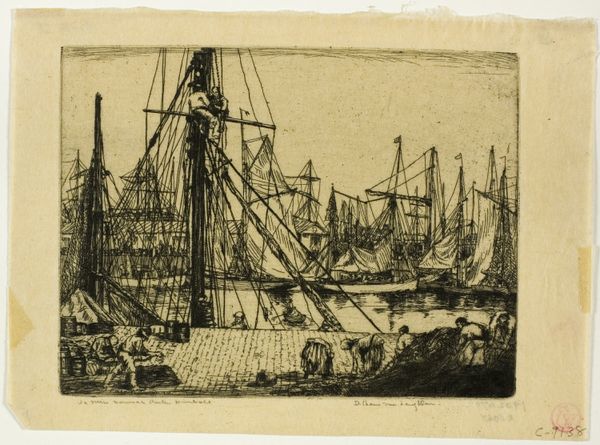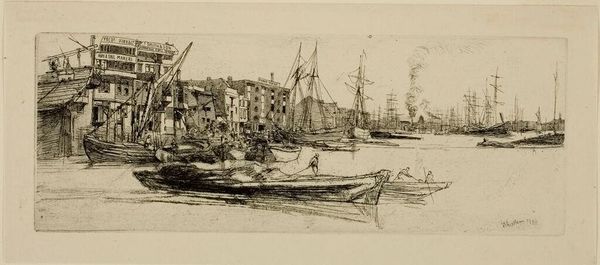
drawing, etching
#
portrait
#
drawing
#
black and white photography
#
impressionism
#
etching
#
landscape
#
black and white format
#
black and white theme
#
black and white
#
monochrome photography
#
water
#
line
#
cityscape
#
monochrome
#
monochrome
Dimensions: 19.9 x 27.5 cm
Copyright: Public domain
Art Historian: Welcome. Here we have James Abbott McNeill Whistler’s "Rotherhithe," an etching from 1860. Look closely and you can see the detail he captured with this printmaking technique. Artist: Wow, the texture alone pulls me in. It’s like peering into a foggy memory. All those scratchy lines…it feels so raw, like a forgotten corner of a city. Art Historian: Yes, that's characteristic of Whistler’s style. Note how he employs the etching needle to construct form with such distinct clarity, capturing not only the likeness of figures and setting, but their symbolic weight as well. Observe, for example, the foreground figures. Artist: The men there look like they’re waiting for something... or avoiding something. Their expressions seem shrouded, much like the boats out on the water, barely there. Do you think that the ships out there could also suggest some feeling of waiting or expectation? Art Historian: Maritime symbols have long been stand-ins for journeys and passages; literal and spiritual. The obscuring fog is not simply weather, but an emblem of the limits of human vision, knowledge and, indeed, hope. Artist: Absolutely! The industrial setting – cranes and ships – hints at trade, movement. And those upright poles around which the picture seems to gather: the verticals almost look like the bars of a jail. The high horizon contributes to an atmosphere of pressure, anxiety. I wonder if there are meanings hidden inside its history. Art Historian: “The Pool of London,” as Rotherhithe was then known, stood as one of the most important points of global trade in Victorian England. Whistler masterfully evokes both sides of that prosperity; this work memorializes the physical grime of labor, as well as England's aspirations. The light reflected on the water might signal an emerging future—with, as you suggest, certain constraints and challenges suggested by the verticals that cut across our vision. Artist: You know, seeing it that way enriches the experience even more. The fog doesn't just hide; it suggests the possibility of what *could* be seen, transforming it into something more evocative. Art Historian: Indeed. What might first appear to be simple cityscape in monochrome reveals layer after layer of meaning, resonating across both material conditions and emotional depths. Artist: So much from simple lines. It really shows how artists transform the mundane into a vessel of potent feeling.
Comments
No comments
Be the first to comment and join the conversation on the ultimate creative platform.
